Saint Lucia
Welcome to Saint Lucia
Welcome to Saint Lucia, a jewel of the Eastern Caribbean renowned for its stunning natural beauty, vibrant culture, and warm hospitality. Whether you’re seeking a romantic getaway, an adventurous escape, or simply a place to unwind on pristine beaches, Saint Lucia offers an unforgettable experience for every traveler.
Saint Lucia is a lush, mountainous island located in the Lesser Antilles, known primarily for its iconic twin volcanic peaks, the Pitons, which are a UNESCO World Heritage site. The island’s landscape is a captivating mix of tropical rainforests, waterfalls, black- and white-sand beaches, and vibrant coral reefs. Its history is rich and diverse, shaped by indigenous peoples, French and British colonial influences, and African heritage, all of which contribute to the island’s unique cultural tapestry.
The island’s economy thrives on tourism, agriculture, and a growing service sector, with visitors drawn to its natural wonders and luxurious resorts. Saint Lucia’s towns, such as Soufrière, Castries, and Gros Islet, offer lively markets, historical landmarks, and a taste of local life. The island is also known for its friendly and welcoming people, making it a safe and inviting destination for travelers.
Why Visit Saint Lucia?
1.
Breathtaking Natural Beauty: From the dramatic Pitons towering over the sea to the lush rainforests and sparkling waterfalls, Saint Lucia is a paradise for nature lovers and photographers alike. The island’s diverse ecosystems provide ample opportunities for hiking, diving, snorkeling, and wildlife spotting.
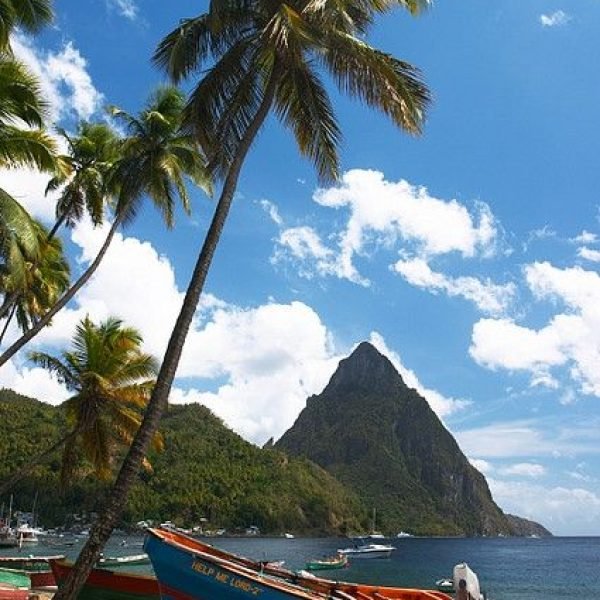
2.
Rich Cultural Experience: Saint Lucia’s vibrant culture is a blend of African, French, British, and Carib influences. Visitors can immerse themselves in local music, cuisine, festivals, and historical sites, gaining a deeper appreciation for the island’s heritage.
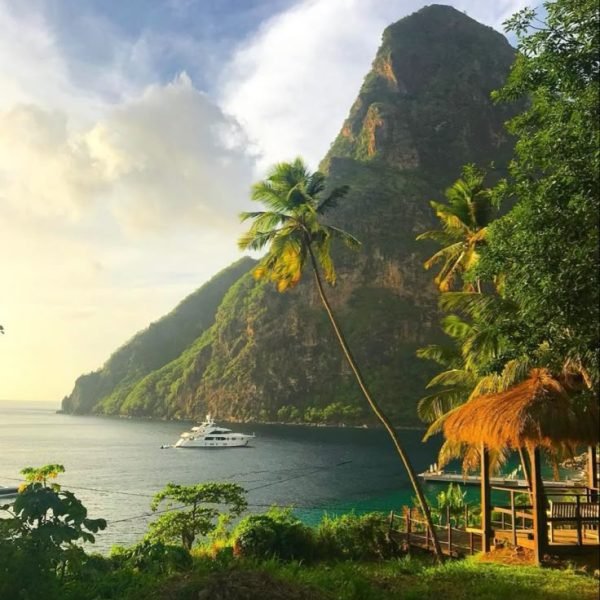
Planning Your Trip
Visa Information
Most visitors from the United States, Canada, the United Kingdom, and European Union countries do not require a visa for stays up to six weeks. However, travelers should check the latest entry requirements based on their nationality before booking, as visa policies can change. A valid passport with at least six months’ validity beyond the date of entry is generally required.
Best Time to Visit
The ideal time to visit Saint Lucia is during the late spring and early summer months, particularly May and June. During this period, the weather is warm and pleasant, with temperatures typically ranging from the high 70s to low 80s Fahrenheit (around 25-28°C), and the island experiences fewer crowds compared to the peak winter season. The dry season runs from December to May, offering sunny skies and minimal rainfall, while the hurricane season spans June to November, with a higher chance of tropical storms.
Getting To and Around
Getting There
Saint Lucia is served by two main airports: Hewanorra International Airport (UVF) in the south and George F. L. Charles Airport (SLU) near Castries in the north. Hewanorra handles most international flights, including direct connections from North America and Europe, while George F. L. Charles caters mainly to regional flights within the Caribbean.
Getting Around
Traveling around Saint Lucia is convenient and offers several options:
- Car Rental: Renting a car is a popular choice for visitors who want the freedom to explore the island at their own pace. Roads are generally in good condition, but drivers should be comfortable with left-hand driving and winding mountain roads.
- Taxis: Taxis are readily available and can be hired for short trips or full-day tours. It’s advisable to agree on fares before starting your journey.
- Public Transport: Minibuses operate on fixed routes between major towns and villages, offering an affordable way to get around, though schedules can be irregular.
- Tours: Many visitors opt for guided tours that combine transportation with sightseeing, such as boat trips to the Pitons, rainforest hikes, or visits to the Sulphur Springs and botanical gardens.
Saint Lucia’s compact size means that most destinations are within a couple of hours’ drive from each other, making day trips easy and enjoyable.
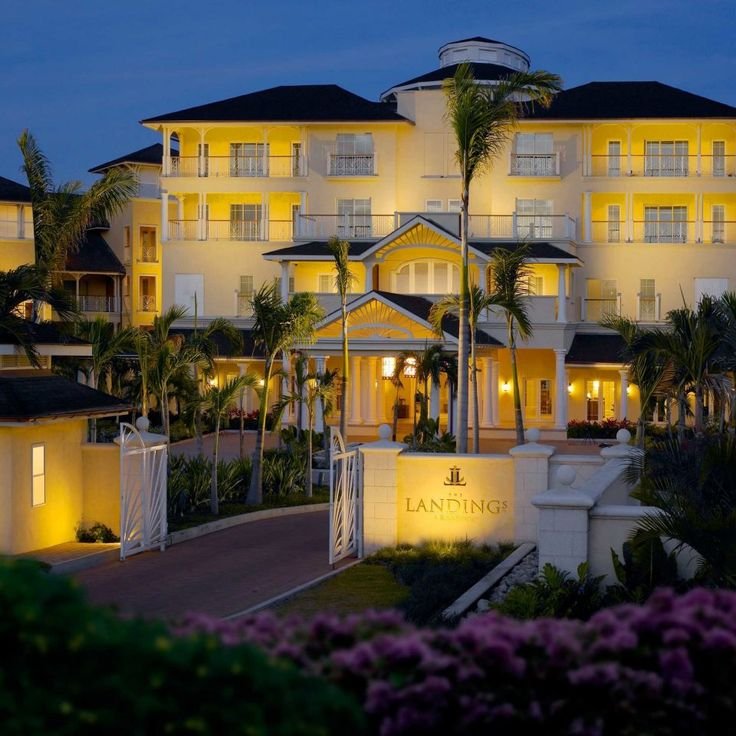
Accommodation
Saint Lucia boasts an impressive variety of accommodations, from ultra-luxury resorts to intimate boutique hotels and all-inclusive properties, ensuring every visitor finds the perfect place to stay.
Luxury Resorts and Villas
For travelers seeking indulgence, Saint Lucia is home to some of the Caribbean’s most renowned luxury resorts. Jade Mountain Resort is famous for its open-concept suites with private infinity pools that overlook the iconic Pitons, offering an unparalleled romantic and serene experience. Sugar Beach, A Viceroy Resort, also provides exquisite beachfront accommodations with modern amenities and fine dining options, perfect for honeymooners and luxury seekers.
The Sandals brand operates three distinct all-inclusive resorts on the island, each with its own unique appeal. Sandals Grande St. Lucian is vibrant and lively, featuring an 18-hole championship golf course and a stunning beach. Sandals Regency La Toc is known for spectacular oceanfront villa suites with private pools and breathtaking views, while Sandals Halcyon Beach offers a more intimate, secluded atmosphere with private pool sanctuaries in many rooms. Guests at any Sandals resort enjoy the benefit of “Stay at One, Play at Three,” allowing access to all three properties.
Boutique Hotels and Villas
For those who prefer a more personalized and intimate stay, boutique hotels like Calabash Cove Resort and Spa and Anse Chastanet Resort provide a blend of privacy, comfort, and local charm. These properties often feature smaller numbers of rooms or villas, lush gardens, and direct access to nature and beaches. Calabash Cove, for instance, is highly rated for its privacy, excellent service, and tranquil ambiance, making it ideal for couples and solo travelers alike.
In the heart of Kotor, the Historic Boutique Hotel Cattaro offers spacious and comfortable rooms with a delightful staff and a terrace restaurant serving excellent local cuisine. Staying here places you steps away from the medieval old town’s cobbled streets and vibrant atmosphere.
All-Inclusive Resorts
Saint Lucia’s all-inclusive resorts cater to families, couples, and groups looking for convenience and value. Royalton Saint Lucia is a popular choice, offering modern facilities, multiple dining options, and activities for all ages. Coconut Bay Beach Resort & Spa is another family-friendly option, combining excitement and relaxation with pools, water parks, and spa services.
Mid-Range and Budget Options and Tips for Booking
While Saint Lucia is best known for luxury, there are also comfortable mid-range hotels and guesthouses that provide good value without sacrificing quality. These accommodations often offer easy access to local attractions and beaches, allowing travelers to experience the island’s culture and natural beauty more intimately.
Tips for Booking
Booking early is recommended, especially for peak travel seasons and popular resorts. Many hotels offer special packages and discounts, including all-inclusive deals that cover meals, drinks, and activities. Some resorts also provide spa and wellness packages, honeymoon specials, and family-friendly promotions.
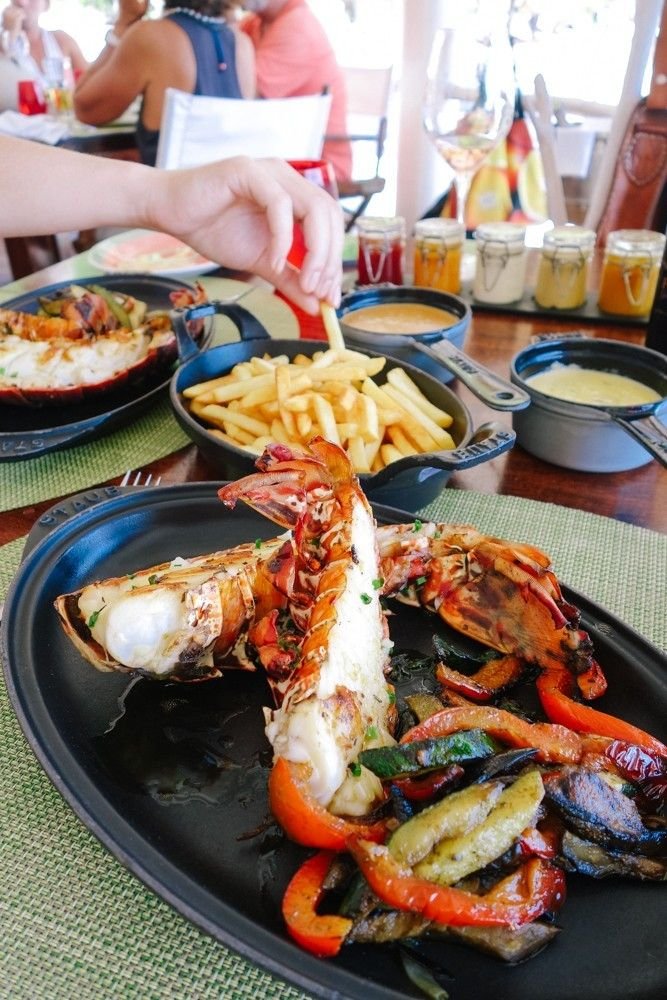
Food and Drink
Saint Lucia’s culinary scene is a delightful fusion of Caribbean, French, African, and Creole influences, reflecting the island’s rich cultural heritage. Dining here is not just about food-it’s an experience that engages all the senses, from vibrant flavors to picturesque settings.
Local Cuisine
The island’s traditional dishes are a must-try for any visitor. Fresh seafood is abundant and often prepared with island spices and herbs. Popular dishes include:
- Green Fig and Saltfish: Saint Lucia’s national dish, featuring salted codfish served with boiled green bananas (green figs).
- Callaloo Soup: A hearty, flavorful soup made from leafy greens, often combined with coconut milk and local seasonings.
- Accra: Deep-fried salted codfish fritters, perfect as a snack or appetizer.
- Bouyon: A thick, savory stew made with meat, vegetables, and dumplings, reflecting the island’s Creole roots.
Farmers’ markets and street food stalls offer authentic tastes and fresh produce, ideal for adventurous eaters wanting to sample local flavors.
Fine Dining and International Cuisine
Saint Lucia also boasts an impressive selection of upscale restaurants, many located within resorts or in towns like Soufrière and Rodney Bay. These establishments serve gourmet dishes that blend local ingredients with international culinary techniques.
At Jade Mountain Resort, for example, the Jade Club restaurant offers inventive dishes that highlight fresh seafood and tropical fruits, served in an open-air setting with stunning views of the Pitons. Sugar Beach’s Saltwood Steakhouse is renowned for its premium cuts and elegant ambiance.
Casual Dining and Beachfront Eateries
For a more relaxed vibe, beachfront shacks and casual eateries serve grilled fish, jerk chicken, and tropical cocktails. Gros Islet Friday Night Street Party is a lively event where visitors can enjoy local food stalls, music, and dancing, providing a true taste of Saint Lucian culture.
Drinks and Nightlife
Saint Lucia’s bars and lounges offer a variety of tropical cocktails, rums, and local brews. The island is famous for its rum, and many resorts and bars feature signature rum punches and cocktails made with fresh island fruits like mango, passion fruit, and guava.
For nightlife, Rodney Bay is the hub, with numerous bars, clubs, and live music venues where you can enjoy everything from reggae and calypso to jazz.
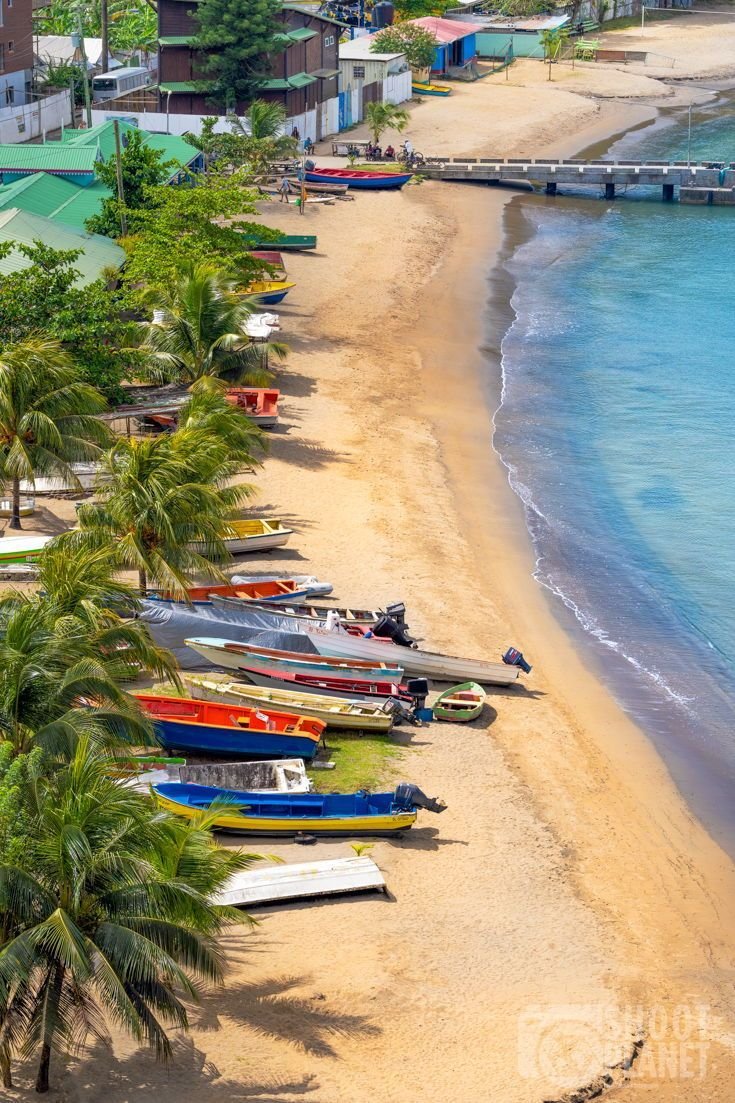
Must-See Attractions
- The Pitons
The twin volcanic peaks, Gros Piton and Petit Piton, are the most iconic symbols of Saint Lucia and a UNESCO World Heritage site. Rising majestically from the sea, these mountains dominate the island’s skyline and offer breathtaking views. Gros Piton, the larger of the two, is accessible via a guided hike that takes about four to five hours round trip. The trail winds through lush rainforest, revealing stunning vistas of the Caribbean Sea and the island’s verdant landscape. Petit Piton is steeper and more challenging, recommended only for experienced climbers. Even if you don’t hike, the Pitons can be admired from numerous vantage points, including from the beach at Sugar Beach, a luxury resort uniquely situated between the two peaks. - Pigeon Island National Landmark
Located at the northern tip of the island, Pigeon Island National Park is a blend of history, nature, and recreation. This 44-acre park features well-preserved colonial ruins, including British forts and barracks, which tell the story of Saint Lucia’s strategic military past during the battles between the French and British. Visitors can hike to the summit of Fort Rodney for panoramic views of the coastline and nearby islands. The park also offers quiet beaches, picnic areas, and a small museum, making it a perfect spot for a day of exploration and relaxation. - Sulphur Springs and Mud Baths
Near the town of Soufrière, the Sulphur Springs are famed as the world’s only drive-in volcano. Visitors can witness steaming vents and bubbling pools of mineral-rich mud, known for their therapeutic properties. Bathing in the warm mud and mineral pools is a unique experience said to soothe muscles and rejuvenate the skin. Nearby, the Toraille Waterfall offers a refreshing contrast with its cool cascading waters surrounded by lush vegetation. - Marigot Bay
Often described as one of the most beautiful bays in the Caribbean, Marigot Bay is a tranquil haven with calm waters and dramatic cliffs. It’s a favorite spot for sailing enthusiasts and offers charming waterfront restaurants where you can enjoy fresh seafood while watching yachts drift by. - Soufrière Town
This historic town is the gateway to many natural wonders, including the Pitons, Sulphur Springs, and Diamond Falls Botanical Gardens. The gardens are a riot of tropical colors, with mineral-rich waters that change color due to volcanic minerals. Soufrière itself is a charming town with colorful markets and friendly locals. - Reduit Beach and Rodney Bay
For those seeking sun and sand, Reduit Beach in Rodney Bay is one of the island’s most popular beaches. Its long stretch of golden sand and calm waters are perfect for swimming, sunbathing, and water sports. The Rodney Bay area also offers vibrant nightlife, shopping, and dining options.
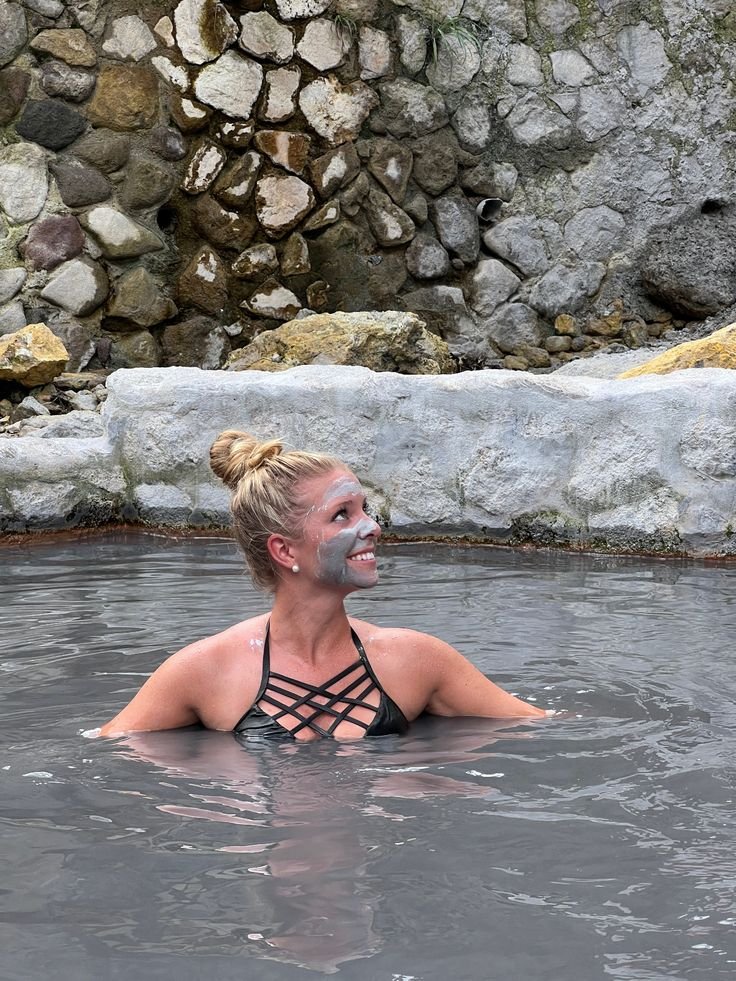
Must-Do Activities
- Hiking the Pitons
Climbing Gros Piton is a must for active travelers. The guided hike is moderately challenging but rewarding, with opportunities to spot tropical birds and unique flora along the way. Guides share fascinating insights about the island’s ecology and history, making the trek both educational and exhilarating. - Snorkeling and Scuba Diving
Saint Lucia’s coral reefs and marine life are spectacular. Popular snorkeling spots include Anse Chastanet and Jalousie Beach, where crystal-clear waters reveal vibrant coral gardens and tropical fish. For certified divers, dive sites like the wreck of the St. Lucia Liberty and the coral reefs near Soufrière offer unforgettable underwater adventures. - Relaxing in the Sulphur Springs Mud Baths
After exploring the island, many visitors indulge in a therapeutic soak in the mineral-rich mud baths at the Sulphur Springs. The warm mud is believed to have healing properties, and the experience is both relaxing and invigorating. - Explore Pigeon Island by Foot or Bike
Walking or cycling around Pigeon Island National Park is a great way to combine history with nature. Trails lead to historic forts, lookout points, and secluded beaches. The park often hosts cultural events and concerts, adding to its appeal. - Sailing and Boat Tours
Taking a boat tour around the island is a fantastic way to see the coastline and the Pitons from the water. Options range from romantic sunset cruises to adventurous catamaran tours that include snorkeling stops and beach picnics. - Attend the Gros Islet Friday Night Street Party
For a taste of local culture and nightlife, the Gros Islet Friday Night Street Party is a lively event filled with music, dancing, and street food. It’s a great opportunity to mingle with locals and enjoy authentic Caribbean flavors in a festive atmosphere. - Visit the Diamond Falls Botanical Gardens
This lush garden offers a peaceful retreat with its colorful flowers, tropical plants, and the stunning Diamond Waterfall. The mineral baths here are also popular for their soothing effects. - Try Water Sports at Reduit Beach
Reduit Beach is ideal for jet skiing, paddleboarding, and kayaking. Rentals and lessons are available, making it easy for beginners and experienced enthusiasts to enjoy the water. - Discover Morne Coubaril Historical Adventure Park
This cultural attraction offers insight into Saint Lucia’s plantation history. Visitors can tour a working plantation, learn about traditional farming methods, and enjoy horseback riding and zip-lining through the rainforest. - Experience Saint Lucia Jazz & Arts Festival
If your visit coincides with this annual event, it’s a must-do. The festival showcases international and local musicians, art exhibitions, and cultural performances, celebrating the island’s vibrant artistic scene.
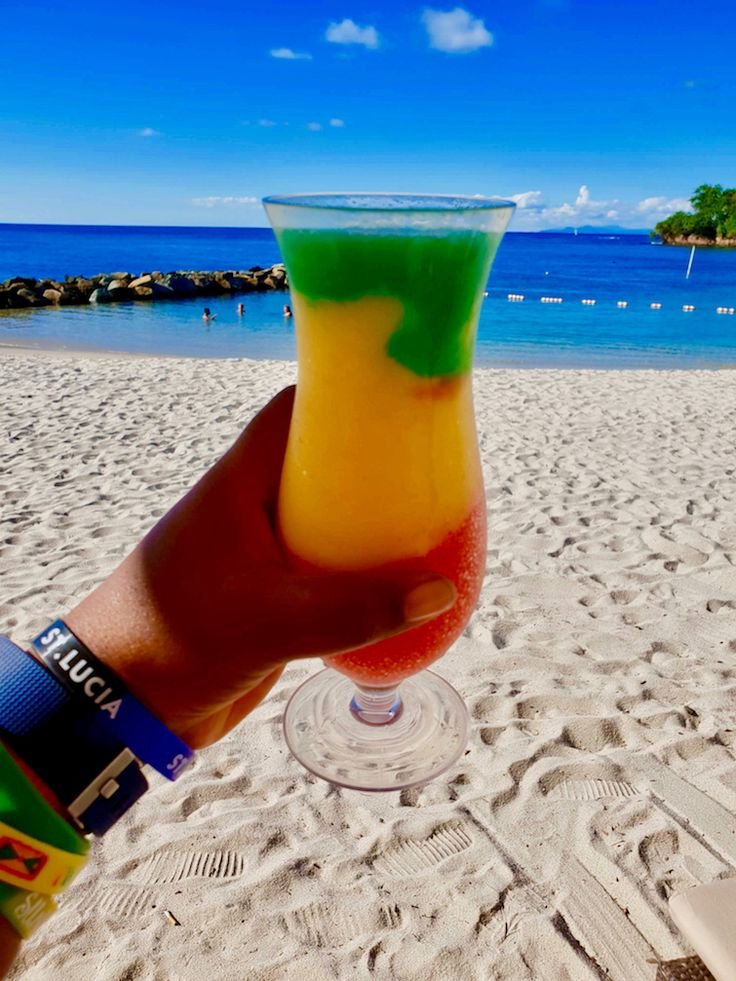
Travel Tips
Traveling to Saint Lucia in 2025 promises an unforgettable experience filled with stunning landscapes, vibrant culture, and warm hospitality. To make the most of your visit, it’s essential to be well-prepared. Here’s a detailed guide on travel tips covering safety advice, local customs, and language basics to help you navigate the island confidently and respectfully.
Safety Advice
Saint Lucia is widely regarded as one of the safest Caribbean destinations, with a strong emphasis on tourist safety and a welcoming local population. However, like any travel destination, exercising common sense and taking precautions will ensure a smooth and enjoyable trip.
General Safety Tips
- Stay in reputable accommodations: Choose well-reviewed hotels or resorts, preferably in popular tourist areas where there is a strong police presence.
- Be cautious at night: Avoid walking alone in isolated or poorly lit areas after dark. Stick to main roads and well-populated places.
- Use licensed transportation: Only use registered taxis with blue number plates and negotiate fares upfront. Avoid unlicensed taxis or accepting rides from strangers. Ride-sharing apps are also available and can be a safer alternative.
- Protect your valuables: Keep passports, cash, credit cards, and other valuables in a hotel safe or on your person in a concealed money belt. Avoid carrying large sums of cash and be discreet when using ATMs by shielding the keypad and using machines located in secure, well-lit areas such as banks or shopping centers.
- Be alert in crowded places: Petty crimes like pickpocketing and bag snatching can occur in busy markets, festivals, and street parties. Stay vigilant and keep your belongings close.
- Avoid illegal drugs: Saint Lucia enforces strict penalties for drug offenses. Stay clear of any involvement with drugs.
- Respect local laws: Camouflage clothing is prohibited on the island, as it resembles military attire and is illegal to wear. Leave such clothing at home.
Road and Transport Safety
- Saint Lucia drives on the left side of the road, which may be unfamiliar to some visitors. Roads can be narrow and winding with occasional reckless driving, so drive cautiously.
- Avoid driving at night due to limited street lighting in some areas and unpredictable road conditions.
- When using public transportation, be aware that minibuses can drive at high speeds and may not always follow traffic rules strictly.
- Always wear seat belts in cars and helmets on motorcycles or bicycles, though using motorbikes is generally discouraged for tourists due to safety concerns.
Weather and Natural Hazards
- The hurricane season runs from June to November. Travelers should monitor weather updates regularly and have travel insurance that covers emergencies such as medical evacuation or trip interruptions caused by storms.
- When hiking or engaging in adventure activities, never go alone and use reputable tour operators. Trails may be poorly marked and weather conditions can change quickly.
Health Precautions
- Mosquito-borne illnesses such as dengue fever, chikungunya, and Zika virus are present on the island. Use insect repellent containing DEET, wear loose, long-sleeved clothing at dusk, and consider mosquito nets if staying in rural areas.
- Stay hydrated, use sunscreen, and avoid prolonged exposure to the midday sun to prevent heat exhaustion or sunstroke.
Local Customs
Understanding and respecting Saint Lucian customs will enrich your travel experience and foster positive interactions with locals.
Friendly and Respectful Interaction
Saint Lucians are known for their warmth and hospitality. It’s common to greet people with a smile and a friendly “Good morning” or “Good afternoon.” Politeness and respect go a long way in building rapport.
Dress Code
- Casual, tropical attire is appropriate for most places, but dress modestly when visiting churches or government buildings.
- Swimwear is suitable for beaches and pools but should not be worn in town or restaurants.
- As mentioned, avoid camouflage clothing entirely.
Public Behavior
- Public displays of affection, especially between same-sex couples, may attract attention due to conservative social attitudes. Exercise discretion to respect local sensibilities.
- Loud or disruptive behavior in public spaces is frowned upon.
Tipping
Tipping is customary but not mandatory. In restaurants, a 10-15% tip is appreciated if service is not included. Taxi drivers and hotel staff also welcome small tips for good service.
Language Basics
- English is the official language and widely spoken throughout the island, making communication straightforward for most visitors.
- Saint Lucian Creole French (Kwéyòl) is also spoken by many locals, especially in rural areas and among older generations. Learning a few basic phrases in Kwéyòl can endear you to locals and enrich your cultural experience.
Language Basics
While English is the language of business, government, and education, Saint Lucian Creole French adds color to everyday life. Here are some useful phrases to know:
- Hello: Hello / Bonjou (pronounced bon-zhoo)
- Goodbye: Goodbye / Orevwar (pronounced oh-reh-vwar)
- Please: Please / Silvouplé (pronounced seel-voo-play)
- Thank you: Thank you / Mèsi (pronounced meh-see)
- Yes: Yes / Wi (pronounced wee)
- No: No / Non (pronounced non)
- How are you?: How are you? / Ki jan ou yé? (pronounced kee jan oo yay)
- I’m fine, thank you: I’m fine, thank you / Mwen byen, mèsi (pronounced mwen byen, meh-see)
- Excuse me / Sorry: Excuse me / Eskizé mwen (pronounced es-kee-zay mwen)
- Where is…?: Where is…? / Ki koté…? (pronounced kee koh-tay)
Using these simple greetings and phrases can open doors to friendly conversations and show respect for local culture.
Final Tips for a Smooth Journey
Saint Lucia in 2025 offers a safe and welcoming environment for travelers who take sensible precautions and respect local customs. By staying alert to your surroundings, using licensed services, and embracing the island’s rich cultural heritage-including its language-you’ll enjoy a rewarding and memorable Caribbean adventure. Always prepare for changing weather, especially during hurricane season, and keep health and safety top of mind to ensure your trip is as smooth and enjoyable as possible.

